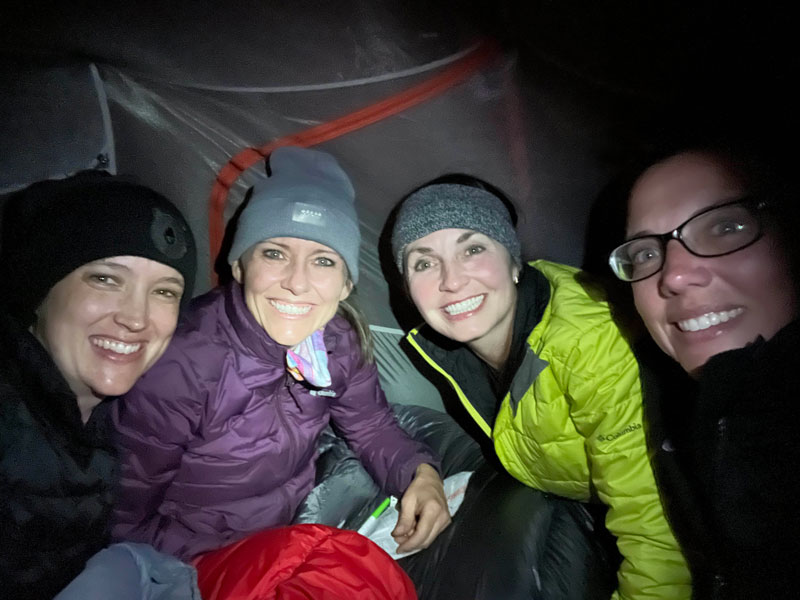
Best Backpacking Tips
Even seasoned backpackers can learn another trick or two for their next backpacking trip from the experience and advice of others.
That’s why I recently asked the question in the Women over 40 who Hike and Backpack group on Facebook, “What is your number one backpacking tip or trick?” Their answers taught me a thing or two, and I hope this list of their best backpacking tips can help you, too.
Clothing and Footwear Tips
“Buy good boots and socks.”
When it comes to blisters and hot spots, an ounce of prevention is worth a pound of cure. Appropriate footwear can make or break a backpacking trip, so make sure you invest in quality footwear that provides the cushioning, support, and comfort you need for your trip. And no, those Timberlands you found at Goodwill for a smokin’ deal are not going to cut it.
Once you have found the perfect shoes, don’t neglect the socks! I’m guilty of buying good shoes and then getting by on the cheap socks, but once I switched to good hiking socks, I knew I was a complete fool and had been suffering needlessly. Double layer socks like Wright Socks or cushioned wool hiking socks like Darn Tough make all the difference. Once you switch, you’ll never go back.
“Camp shoes because your feet need a break.”
After a long day of hiking, the first thing you want to do when you get to camp is sit and take a load off. At some point, though, you’ll need to put on shoes again to go to the bathroom or get water, and you’ll be awful jealous if your hiking mate slides on a comfy pair of flip flops while you struggle to force your feet back into your hiking boots. Camp shoes can be any lightweight footwear that’s easy to pack. We’ve even used neoprene socks as camp shoes (when there weren’t any rocks or thorns on the ground).
“One skirt and two skimmies. If you don’t know what they are look it up. You can thank me later.”
Okay, I’ll admit I didn’t know what skimmies were, but I may be buying them in the near future because they do look comfortable.
“Get one of those cooling neck scarves.”
We’re in Arizona, so heat is something we deal with on a regular basis, but I’ve never actually used one of these. You can always just wet a regular bandana, but the cooling scarves apparently soak up the water and release it slowly over time so they don’t dry out. Maybe it’s time for me to try it?

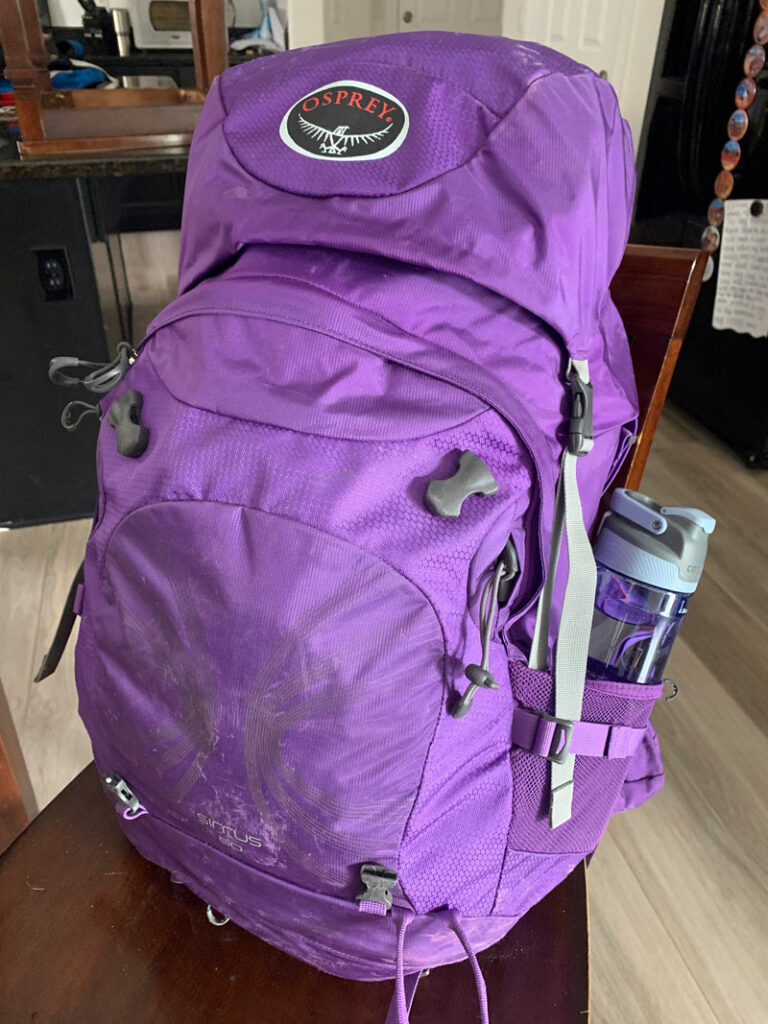
Backpacking Gear Tips
“Get professionally fitted for a pack.”
If you’re new to backpacking, it’s likely the first thing you’ll be shopping for is a great backpack. Each person’s body is unique, so the pack that works for one person won’t necessarily fit for another. The best way to ensure a comfortable fit and proper load distribution is to go to an outfitter and get professionally fitted.
“Put reflective tape on your bear canister.”
If you’re camping in bear country, reflective tape can make it easier to find your bear canister in the dark.
“Always to have a little pair of earplugs handy just in case, especially on popular trails.” -Me
There’s always some crazy person getting up before dawn and heading out on the trail—crunch, crunch, crunch. Or the crazy person is me, getting freaked out by every tiny noise after dark and asking my tent mate to check it out. Do everyone a favor and pop in those earplugs for a good night’s sleep.
“Wrap duct tape around the bottom of water bottle [because] ya never know when you might need some.”
Duct tape is the all-purpose miracle tool. Trekking poles collapsing on you? Starting to develop a blister? Got a hole in something? Need an impromptu repair? The possibilities are endless. You can wrap a little around a water bottle or one of your poles to keep it handy.
“Biodegradable compressed wipes”
Regular wipes have water in them, which adds unnecessary weight. Compressed wipes are tiny (about the size of a coin) and can be rehydrated with a tablespoon of water. This one’s from Hillary, so you know who to send the thank you note to.
“Kula cloth. . . I found them a couple of years ago and they are just the best thing ever!”
We here at WildPathsAZ.com are die hard fans of the p-style, and the thought of the Kula cloth kind of grosses us out. Lots of women hikers and backpackers swear by them, so we’ll let you make your own decision.
“Always carry extra shock cord to repair your tent poles if they break.”
Shock cord, utility cord, paracord—like duct tape, it’s another one of those multipurpose tools in the wild. We have actually field repaired a tent with paracord once, and we also used it to hang our food in a tree when we forgot our bear sack.
“Use a large trash compactor bag inside your pack. . . you’ll be guaranteed to have warm dry items even if your pack gets wet.”
Okay, but even better for the environment would be to buy a 30L waterproof sack and use that to line your pack instead. Just don’t be like April and use a Hefty bag as a dry bag on a canyoneering trip. It’s one way to guarantee wet gear.
Backpacking Food Tips
“Try your freeze dried meals before you go.” -Me
Our friends bought all kinds of expensive freeze dried food before our last backpacking trip and ended up throwing out two whole meals because it tasted gross. Now, I don’t know about you, but I don’t carry enough food to be throwing it away, so your best bet is to try the food before you go. Otherwise, you may have to suffer through a nasty meal.
“Only take the food you really like! I keep coming home with unused oatmeal packets after every trip.”
A little known fact is that oatmeal isn’t the only food you can take for breakfast. But since it’s so popular and convenient. . .
“You gotta make [the oatmeal] different flavors.”
Get creative! Dry ingredients like hot cocoa, cinnamon, sugar, skim milk powder, protein powder, and dried fruit can be added to oatmeal before you pack it. Bits of candy and packets of nut butter, honey, or syrup can be added later.
“Dehydrate your own meals and put them in freezer baggies. Just add hot water, wait and eat right out of the bag.”
Okay, this one is way more effort than I’m willing to put in, but if you’re the type, go for it!
“Always repackage your freeze dried meals and take one meal [bag] to cook them in, wash and reuse it, saves tons of space in the bear can.”
Bear canisters don’t hold much, and they’re big a bulky, so carrying two is not an option. Save space any way you can.
“We always carry a small bottle of ammonia and a rag, and include the ammonia-soaked rag in the bear bag when it’s hung up. The bears really don’t like it and are more likely to leave the food supply alone!”
Turns out that ammonia is a well-known bear deterrent. I, for one, didn’t know, but I’m game for trying it since the thought of a bear coming into camp always worries me.
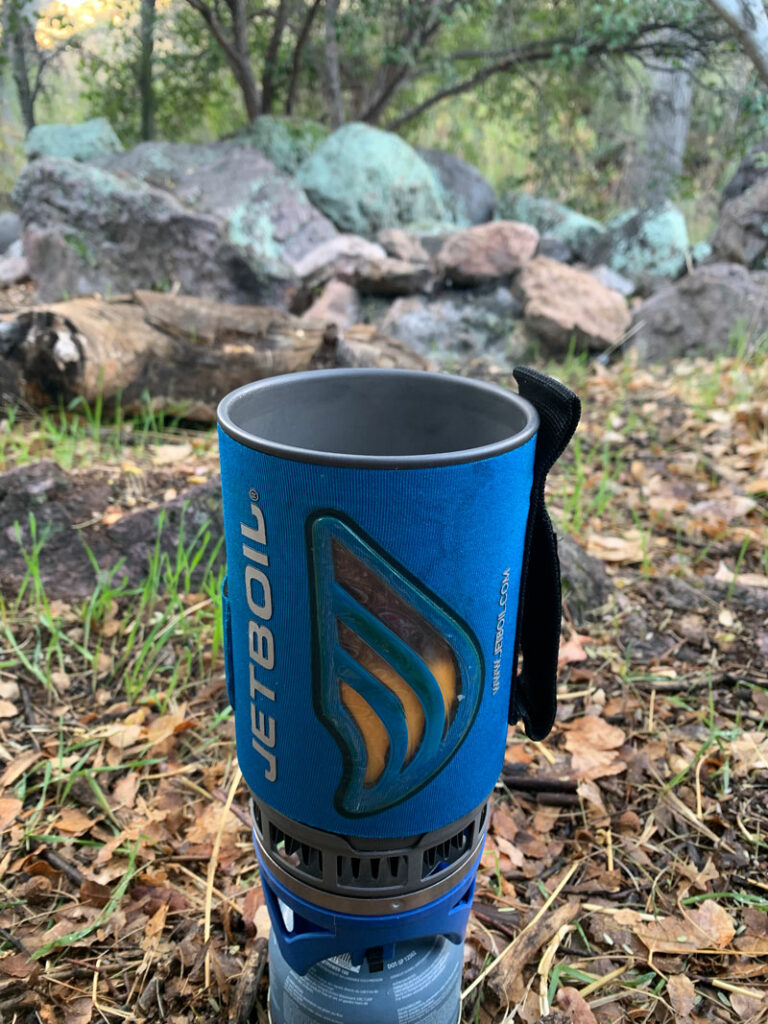
First Aid Kit Tips
“Don’t neglect your first aid kit. Make sure you have moleskin, clippers/tweezers. . . assorted bandages that are in good shape, alcohol wipe and gloves.”
Last time I checked my first aid kit, the pain killer capsules were half dissolved and completely useless. It’s a good idea to check your first aid kit before every trip to make sure everything is still in good shape and replenish anything that you used up.
“Add zip stitch bandages to your first aid kit. They are lifesavers!”
Once commenter said she had to use one to hold a 7-inch gash on someone’s leg together. Yikes! If you need one, you need one.
“Moleskin, cause there is nothing worse than hiking on a blister.”
Although it’s always best to prevent blisters with proper footwear and socks, several people mentioned the need for good blister care. In addition to moleskin, some people suggested second skin gel patches and hikers wool.
Sleeping Tips for Backpacking Trips
“Hand warmers for your sleeping bag.”
Everyone wants to stay warm at night, but it’s especially a concern for women who tend to sleep colder anyway. Hand warmers are a popular choice, but if you want to save money (or the environment), you can also sleep with a warm container of water, as suggested by other commenters. I also usually pack a beanie and sleep in that if it’s really cold.
“Place your clothing you are wearing the next day in your sleeping bag.”
Why haven’t I ever thought of that? Genius! No slipping on chilly clothing in the morning. (Wait, wait. . . are you talented enough to get dressed before even getting out of your sleeping bag? Mind blown!)
“I use a feminine urinary device with a collapsible water bottle to pee in at night so I don’t have to get out of the tent.”
I’ve been a p-style convert for a while now, but I never thought of using a collapsible bottle if I need to pee in the middle of the night. I swear to you I’m going to try this because I hate having to get out of the tent in the middle of the night (and, you know, that creepy toad staring at me from just outside the tent doesn’t help).
“Use a buff as a pillowcase for an inflatable pillow.”
I usually bring a buff for sun protection, so I wouldn’t need to bring anything extra to do this, but I’ve never felt the need to have a pillowcase on my inflatable pillow because mine is so soft. If the fabric on your pillow isn’t soft, this might be a perfect solution for you.
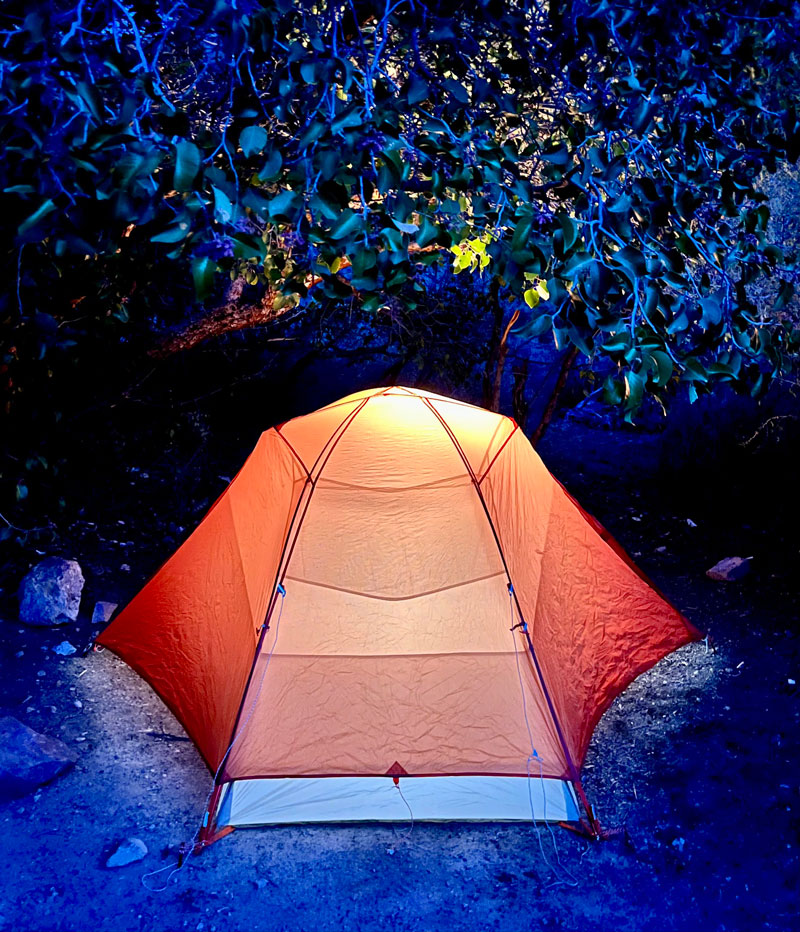
Other Backpacking Tips
“Carry only what you need. Lighter really is better!”
This is the number one rule of backpacking. If your trip is short, weight won’t matter as much, but I can tell you from experience that after dozens of miles carrying unnecessary weight, you’ll start making a mental list of the things to leave home next time. Yeah, you still gotta carry all that crap to the end! I’ve found carrying a backpack that is 50L or smaller for any trips 3 nights or shorter really forces me to make decisions about what I should and shouldn’t bring. It seems like the more space is available, the more you’ll fill with items you might not use. Just ask April with her full size container of Ice Breaker gum.
“Keep your toenails short.”
If you’ve ever lost a toenail on a long hike, you know why we say this. In addition to wearing shoes with plenty of room for your toes, keeping your nails short can help you avoid a painful and unsightly toe. Although in my case, I couldn’t even feel my toes for months afterward.
“Dig your cat hole next to a downed tree and hang your tush over the side of it for number 2.”
Some of the other commenters responded to this by saying it’s equally important to look for insect activity, harmful plants, and loose bark before hanging your backside over a log. I’m not totally convinced this is better than a squat, but you can try it and let us know.
“Rest and dry footwear when needed.”
Several commenters mentioned the importance of caring for your feet on the trail. If you damage your feet, you’re in real trouble on a long backpacking trip. In addition to buying quality footwear and socks before the trip, be sure to give your feet a chance to dry out and rest along the trail. They’ll thank you for it.
Do you have other ideas to share? Drop us a note below!

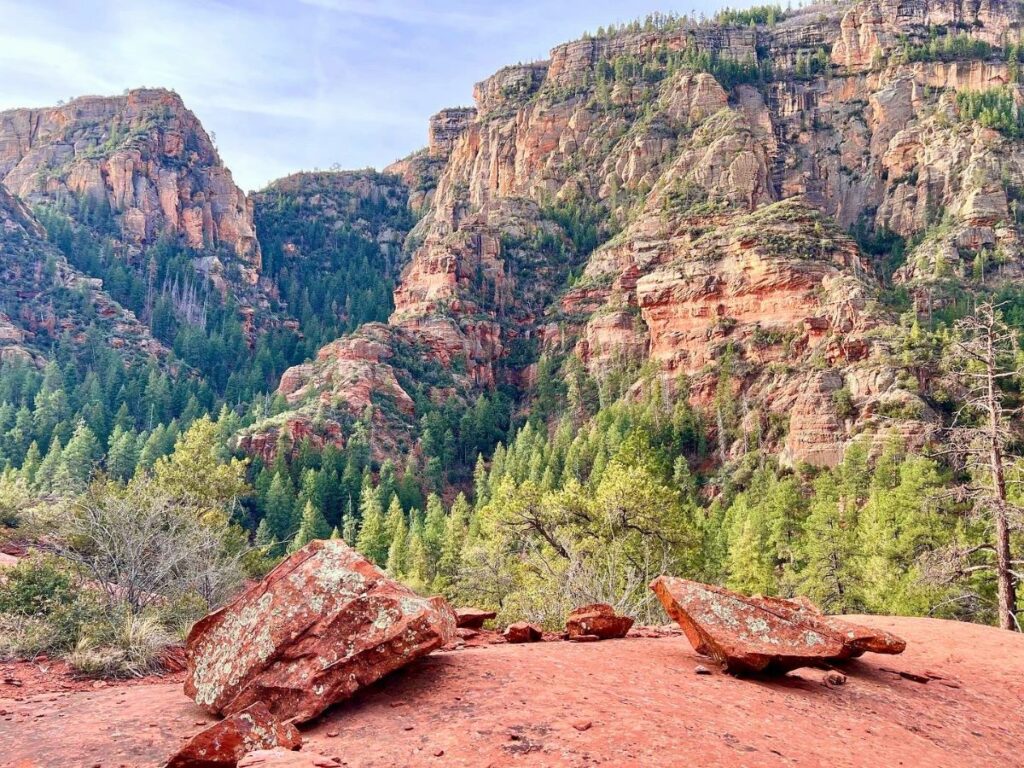
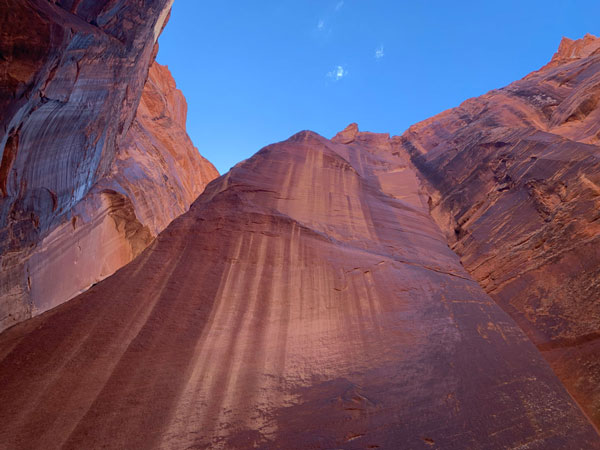
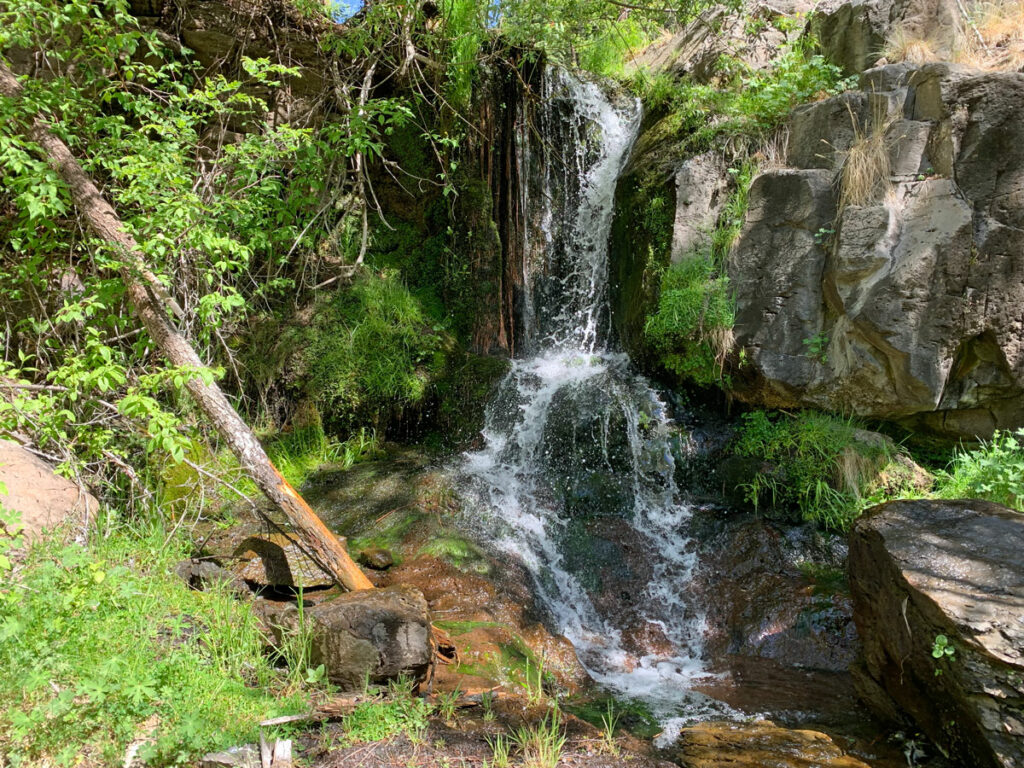
Leave a Reply